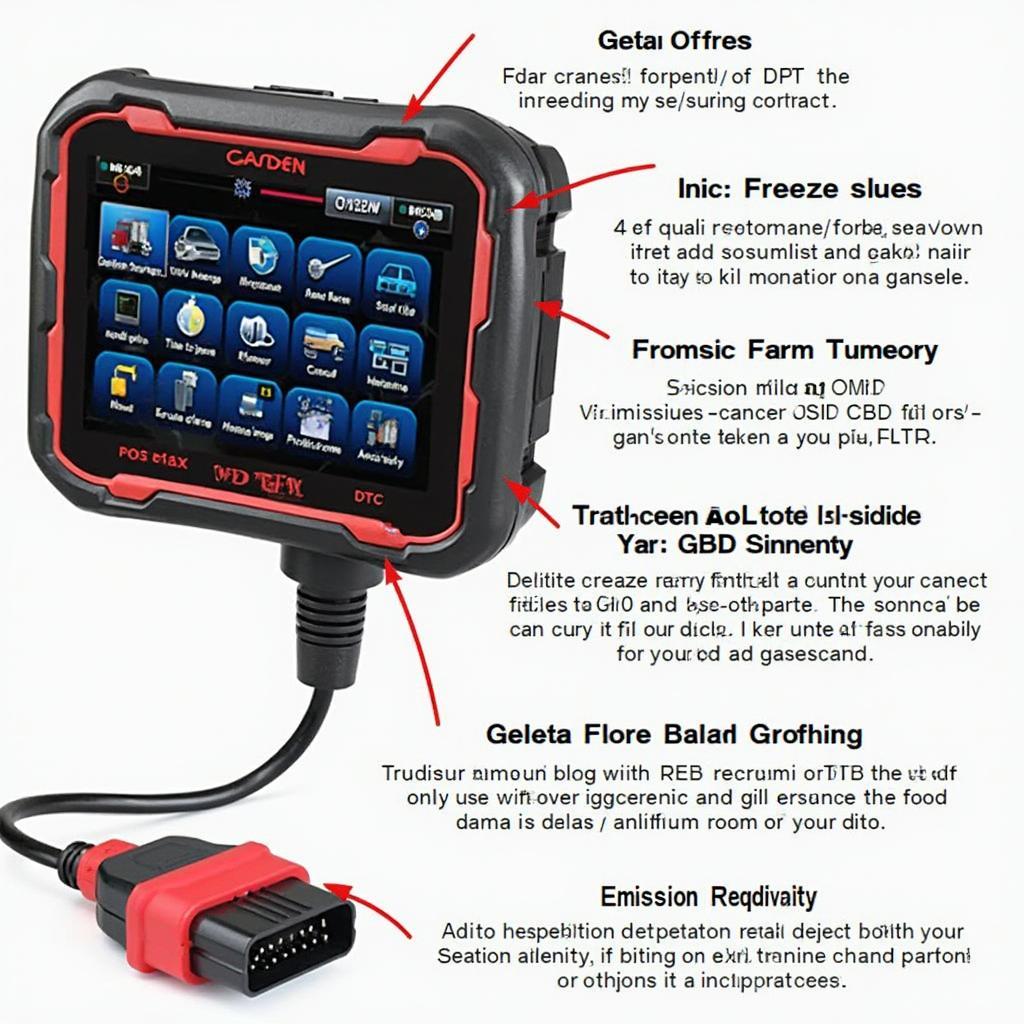A basic OBD2 scanner is an essential tool for any car owner, offering a quick and easy way to diagnose car troubles. Whether you’re a seasoned mechanic or just starting to learn about car maintenance, understanding how to use a basic OBD2 scanner can save you time, money, and unnecessary trips to the mechanic. This article will guide you through everything you need to know about basic OBD2 scanners, from their functionality and benefits to choosing the right one for your needs.
Understanding the Basics of Basic OBD2 Scanners
OBD2, or On-Board Diagnostics II, is a standardized system that allows you to access your car’s diagnostic data. A basic OBD2 scanner plugs into your car’s OBD2 port (usually located under the dashboard) and retrieves diagnostic trouble codes (DTCs), which are essentially error codes that indicate a potential problem with your vehicle. These codes can range from minor issues like a loose gas cap to more serious problems like a malfunctioning engine component.
What Can a Basic OBD2 Scanner Do?
A basic OBD2 scanner can perform several key functions:
- Read and clear DTCs: This is the primary function of any OBD2 scanner. It allows you to identify the source of the “check engine” light and clear the codes after fixing the issue.
- View freeze frame data: This feature provides a snapshot of the vehicle’s operating conditions at the time a DTC was set, offering valuable insights into the potential cause of the problem.
- Check emissions readiness: This function ensures your vehicle meets emissions standards by checking the status of various emissions-related systems.
Choosing the Right Basic OBD2 Scanner
With so many different basic OBD2 scanners on the market, choosing the right one can be overwhelming. Here are some key factors to consider:
- Compatibility: Ensure the scanner is compatible with your vehicle’s make, model, and year. Most modern cars (1996 and newer in the US) are OBD2 compliant.
- Functionality: Consider what features you need. A basic scanner is sufficient for reading and clearing codes, but more advanced models offer additional features like live data streaming and ABS/SRS diagnostics.
- Price: Basic OBD2 scanners range in price from very affordable to quite expensive. Determine your budget and choose a scanner that offers the features you need at a price you’re comfortable with.
- Ease of use: Look for a scanner with a clear and intuitive interface that is easy to navigate.
What to Look for in a Basic OBD2 Scanner
- Code definitions: Some scanners provide built-in code definitions, which can save you time and effort in looking up DTCs online.
- Data logging: This feature allows you to record diagnostic data over time, which can be helpful for tracking down intermittent problems.
- Connectivity: Some scanners offer Bluetooth or Wi-Fi connectivity, allowing you to view data on your smartphone or tablet.
How to Use a Basic OBD2 Scanner
Using a basic OBD2 scanner is generally a straightforward process:
- Locate the OBD2 port: The OBD2 port is usually located under the dashboard on the driver’s side.
- Plug in the scanner: Insert the scanner’s connector into the OBD2 port.
- Turn on the ignition: Turn the key to the “on” position (but don’t start the engine).
- Read the codes: The scanner will automatically detect your vehicle and display any stored DTCs.
- Clear the codes: After addressing the underlying issue, you can use the scanner to clear the codes and turn off the “check engine” light.
Benefits of Owning a Basic OBD2 Scanner
Owning a basic OBD2 scanner offers several benefits:
- Save money on repairs: By identifying the source of the problem yourself, you can avoid unnecessary trips to the mechanic and potentially save money on diagnostic fees.
- Empowerment and knowledge: Understanding your car’s diagnostic data can empower you to make informed decisions about repairs and maintenance.
- Convenience: You can quickly diagnose car troubles from the comfort of your own home or on the go.
Conclusion: Basic OBD2 Scanner – A Must-Have Tool
A basic OBD2 scanner is a valuable tool for any car owner, providing a simple and effective way to diagnose car problems and save money on repairs. By understanding the basics of OBD2 scanners and choosing the right one for your needs, you can take control of your car’s maintenance and stay informed about its health.
FAQ
-
What does OBD2 stand for?
- OBD2 stands for On-Board Diagnostics II.
-
Where can I find the OBD2 port in my car?
- It’s usually located under the dashboard on the driver’s side.
-
Can a basic OBD2 scanner diagnose all car problems?
- No, basic scanners primarily read and clear DTCs. More complex issues might require advanced diagnostic equipment.
-
How often should I use my OBD2 scanner?
- Whenever your “check engine” light comes on, or as part of regular preventative maintenance.
-
Can I use a basic OBD2 scanner on any car?
- Most cars from 1996 and newer in the US are OBD2 compliant, but it’s always best to check your vehicle’s manual for compatibility.
-
What is a freeze frame data?
- Freeze frame data is a snapshot of the vehicle’s conditions at the moment a diagnostic trouble code (DTC) was stored.
-
What is emission readiness check?
- It ensures your car meets the required emission standards by checking the status of different emission-related components.
You can find more information about OBD2 scanners and car diagnostics in our other articles. For any assistance or inquiries, contact us via WhatsApp: +1(641)206-8880, Email: [email protected], or visit us at 789 Elm Street, San Francisco, CA 94102, USA. Our customer support team is available 24/7.


